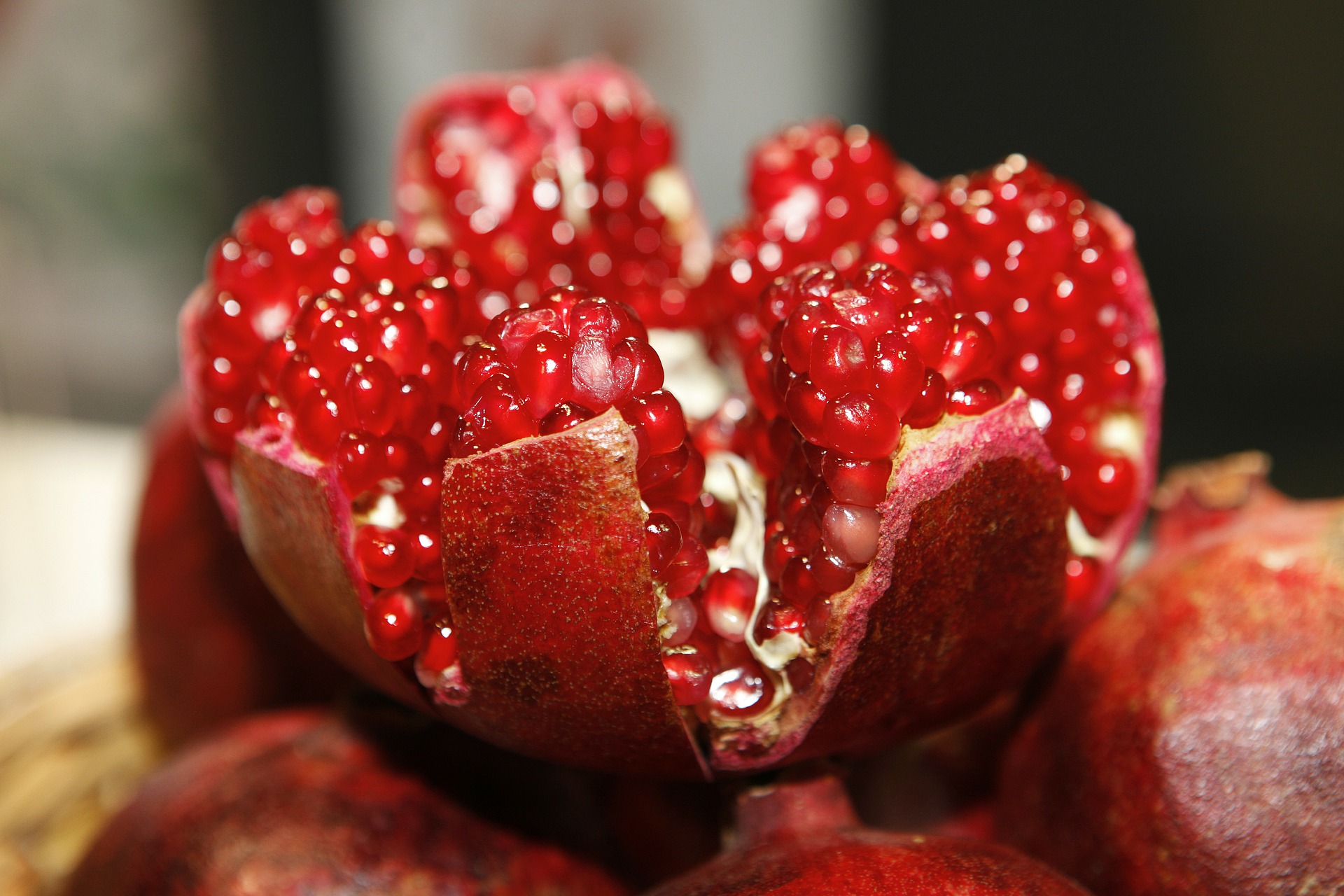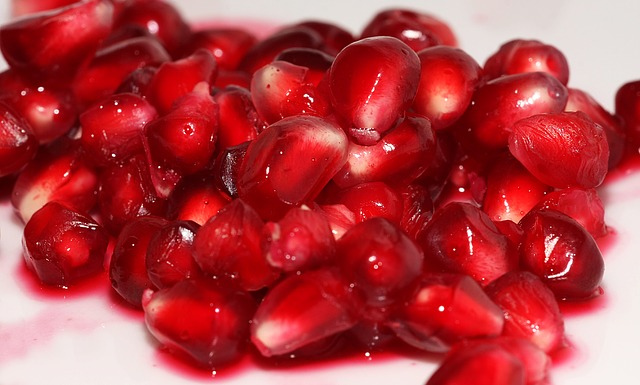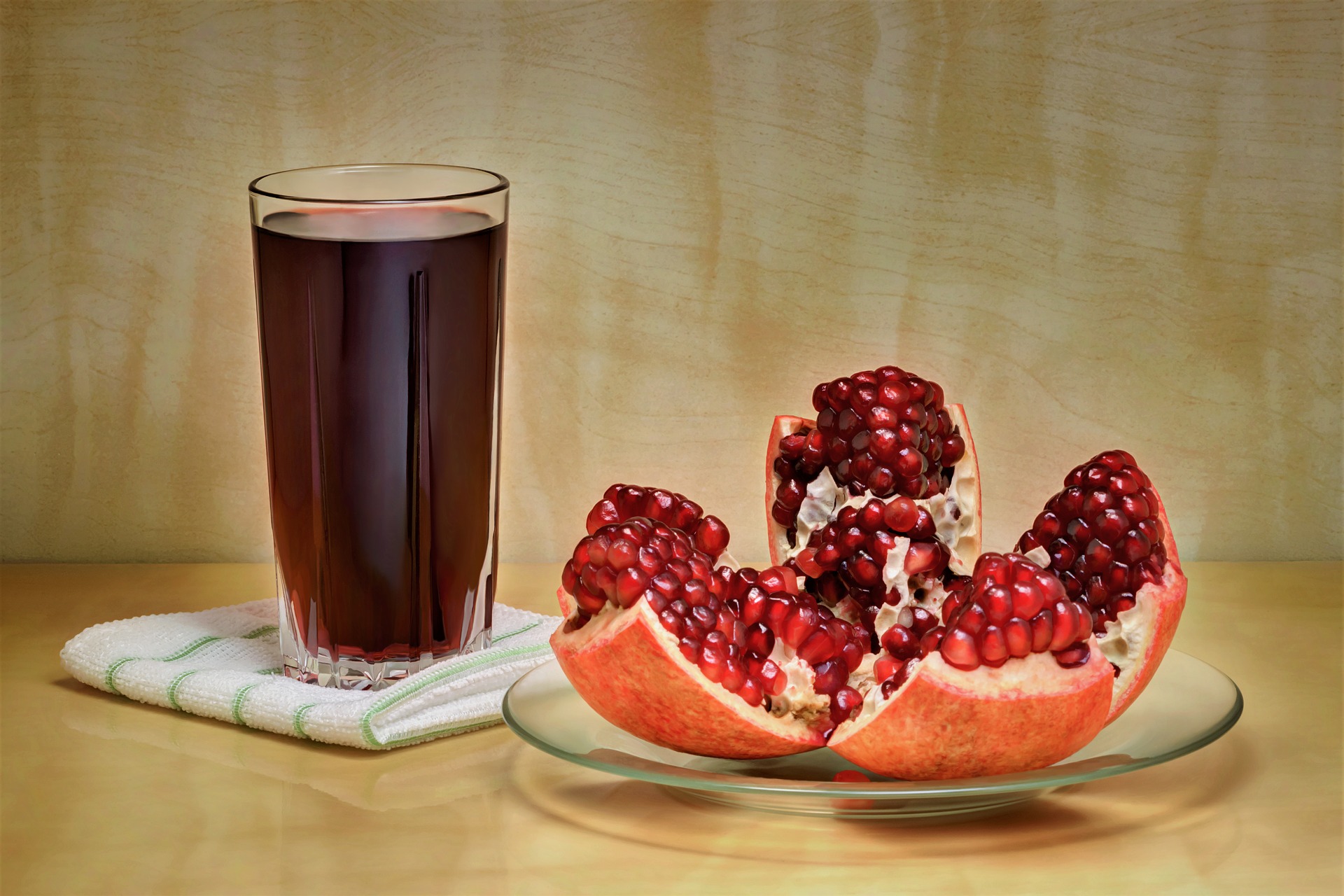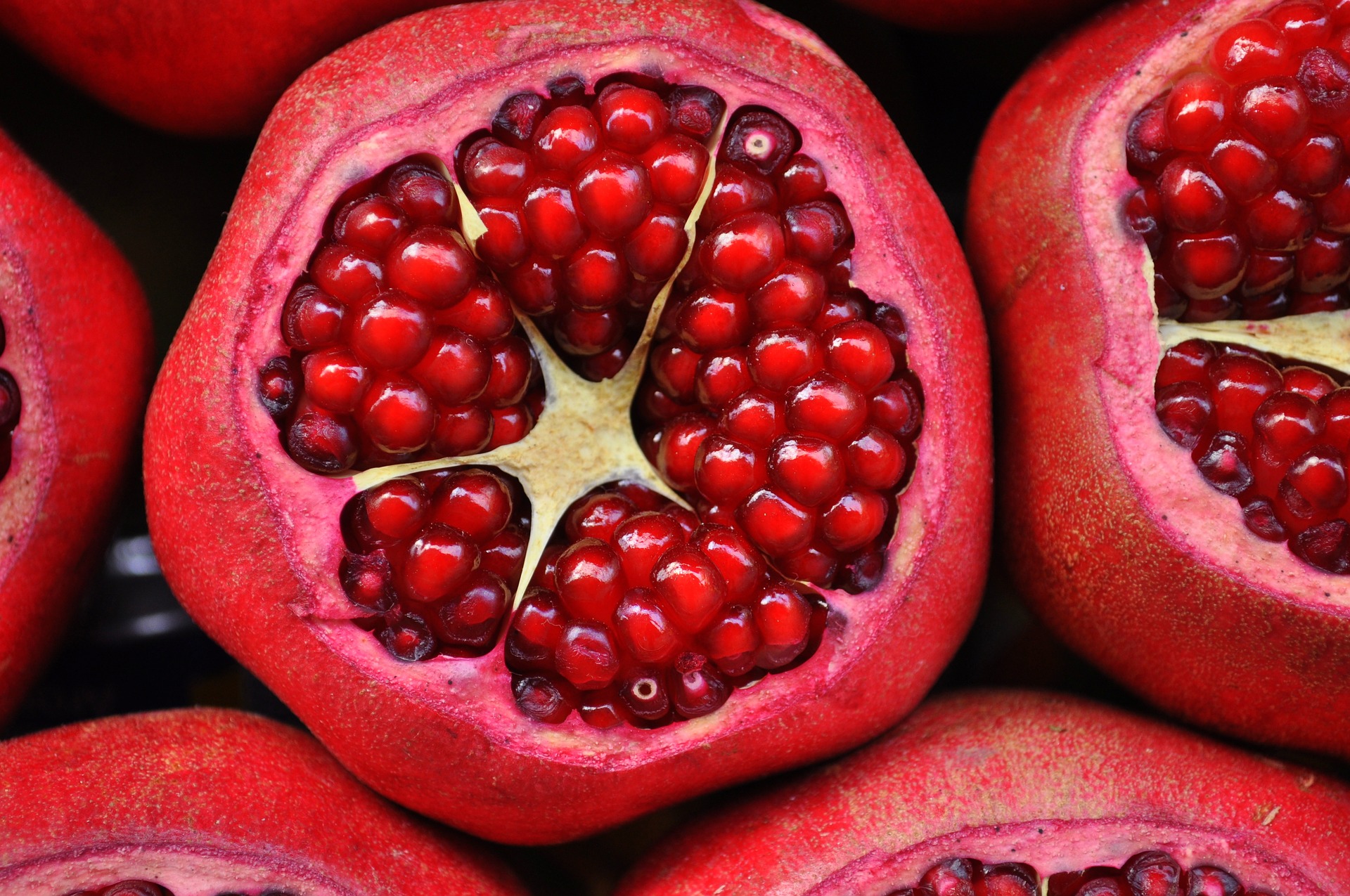by Sharon Quercioli
What’s the Deal with Pomegranates Anyway?
 They are such a beautiful fruit, aren’t they? They’re so beautifully rich and red. The arils (those lovely jewel-type interiors that contain the white seeds) are full of flavor, vitamin C and antioxidants.
They are such a beautiful fruit, aren’t they? They’re so beautifully rich and red. The arils (those lovely jewel-type interiors that contain the white seeds) are full of flavor, vitamin C and antioxidants.
They are most common during the fall; more specifically, you can find them most plentiful in the late summer to the early winter months. When choosing one, make sure that it feels heavy and that the skin is firm (not soft or squishy).
When you eat them, you should eat it the same way as you would a grapefruit. Cut it in half and scoop out the tiny red arils with a spoon. Not only can you eat them plain, you can also add them to salads, oatmeal, yogurt, champagne, mixed into punches and other drinks or desserts.
If you cut one open and realize that you can’t finish all of it, don’t waste it by throwing the rest of the fruit away. Instead, save the seeds by spreading them onto a baking sheet, then placing the baking sheet in the freezer for a couple of hours. After that, you can transfer them into a freezer bag or a container and store them in your freezer.
Do You Eat the Seeds?
 Everyone eats pomegranates differently. Some scoop out the seeds and eat them spoonfuls at a time. Others suck the juice off each seed, then spit them out. While there isn’t a wrong way to eat these interesting fruits, if you spit out the seeds, you will be missing out on some of the great vitamins and minerals that hide in those fibrous kernels. The biggest thing you will be missing out on is the fiber content. Most of the fiber in these fruits can be found in the seeds.
Everyone eats pomegranates differently. Some scoop out the seeds and eat them spoonfuls at a time. Others suck the juice off each seed, then spit them out. While there isn’t a wrong way to eat these interesting fruits, if you spit out the seeds, you will be missing out on some of the great vitamins and minerals that hide in those fibrous kernels. The biggest thing you will be missing out on is the fiber content. Most of the fiber in these fruits can be found in the seeds.
Why Are They Good for You?
Pomegranates are filled with potassium, fiber, vitamin C and antioxidants. Not only that, they are also low in calories. One pomegranate contains only 234 calories. So, if you’re wanting to keep a close eye on the amount of calories you are taking in each day, these wonderful fruits are a healthy alternative to other snacking choices.
They also have anti-inflammatory properties, can help fight prostate cancer, lower blood pressure, fight against breast cancer and may lower your risk of heart disease. Not only that, they’re also great for your brain and can help with memory and exercise performance.
Pomegranate Juice
 Did you know that the average glass of juice contains 23 grams of sugar? This is one of the reasons why I choose to juice my own fruit or blend my own smoothies. It might be convenient to just buy a bottle of juice at your local grocer, the health benefits of making your own juice far outweigh the convenience. After all, it isn’t just the sugar content that we should worry about. Also consider the preservatives necessary to keep those bottles on the shelves for so long. Not to mention the vitamins and minerals which are lost in the processing of commercial juice.
Did you know that the average glass of juice contains 23 grams of sugar? This is one of the reasons why I choose to juice my own fruit or blend my own smoothies. It might be convenient to just buy a bottle of juice at your local grocer, the health benefits of making your own juice far outweigh the convenience. After all, it isn’t just the sugar content that we should worry about. Also consider the preservatives necessary to keep those bottles on the shelves for so long. Not to mention the vitamins and minerals which are lost in the processing of commercial juice.
Now, in our previous email, I gave you my favorite squash salad recipe (“Quinoa, Squash, and Pomegranate Salad”), which is one of my favorite ways to incorporate pomegranates into a meal. It is fresh, filling and healthy. But since I’ve already given you a meal with pomegranate as a main ingredient, the recipe I am going to give you today is for pomegranate juice.
 What You’re Going to Need:
What You’re Going to Need:
- Five or Six Pomegranates
What You Need To Do With Those Things:
- Using a small knife (like a paring knife, often used for small fruit), take off the part of the pomegranate that looks like a small crown. Angle the knife downward, and make a small circle around the crown to remove it.
- It is easier to cut if you score the pomegranate (into small sections) first. Try to score it four or five times to help break the pomegranate into sections.
- Go ahead and crack it open, then set it aside.
- Fill a large bowl with cool water. Break apart the pomegranate arils underneath the water. It helps prevent pomegranate juice from squirting everywhere. (By the way, don’t wear light colored clothes while you’re doing this.) Drain the water from the pomegranate arils when you’re done separating them from the rind.
- Pour the arils into a blender. Blend until all the arils have been crushed but most of the seeds are still intact. This usually takes around 20–30 seconds.
- Now, pour the juice through a strainer. You’ll notice that the juice passes through the strainer pretty slowly because the pulp is pretty thick. To speed up the process, use a rubber spatula to press the pulp against the strainer. The juice should drip through faster.
- Pour juice into a tall glass to serve. About five or six pomegranates will make about four glasses of juice. Leftover juice can be refrigerated in a jar for 5 to 6 days.
